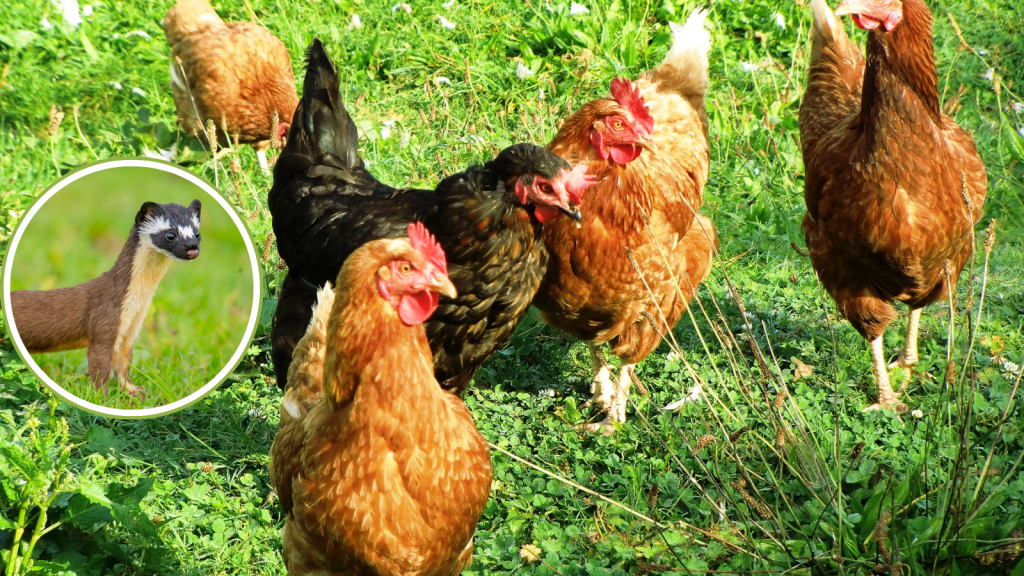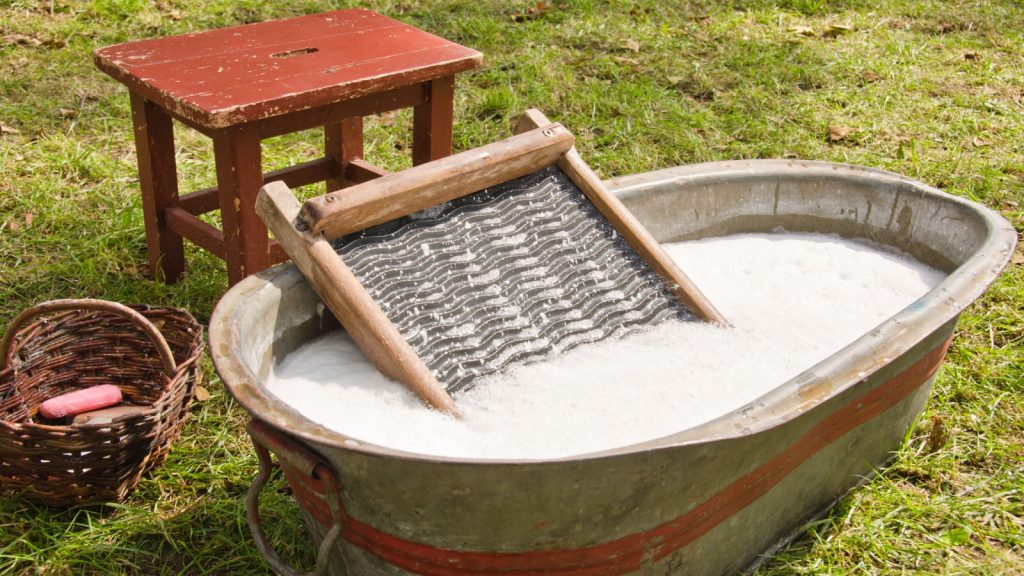We started our chicken-keeping journey about fifteen years ago with a small flock of six hens. Within the first month, we lost two birds to a fox that managed to dig under our simple chicken wire enclosure. That was a hard lesson to learn, and it pushed us to completely rethink our approach to predator protection.
Living in a rural area means sharing space with a wide variety of predators. From aerial threats like hawks and owls to ground predators like foxes, raccoons, and the occasional fisher cat, our chickens face danger from all directions. After years of trial and error (and, unfortunately, some losses), we’ve developed a comprehensive approach to keeping our flock safe.
Understanding Your Predator Threats
The first step in protecting your chickens is understanding exactly what you’re up against. Different regions have different predator profiles, and your protection strategies should be tailored accordingly.
Common Chicken Predators

Daytime Predators:
- Hawks and eagles
- Foxes
- Dogs (both stray and neighborhood pets)
- Coyotes
- Bobcats
- Humans (sadly, chicken theft is real)
Nighttime Predators:
- Owls
- Raccoons
- Opossums
- Weasels and mink
- Skunks
- Fisher cats (in northern regions)
- Bears (depending on your region)
Each predator has its own hunting style. Hawks and owls swoop from above. Foxes and coyotes tend to dig. Raccoons are clever with their nimble fingers and can operate simple latches. Weasels can squeeze through incredibly small openings (as small as a quarter in some cases).
Identifying which predators are active in your area is crucial. You can look for tracks around your coop, set up a trail camera, or ask other local chicken keepers what they’ve encountered. In our case, we discovered that foxes were our primary concern, followed by raccoons and the occasional hawk.
Creating a Secure Coop
Your chicken coop is the first line of defense against predators. Think of it as a fortress that needs to be secure from every angle.
Floor Protection
When we first built our coop, we made the mistake of setting it directly on the ground. This was a vulnerability that cost us those first two hens. Predators can dig surprisingly quickly, and a determined fox can excavate under a coop wall in minutes.
There are several approaches to preventing digging:
- Hardware cloth apron: Extend hardware cloth (not chicken wire) at least 12-18 inches outward from the coop perimeter, buried 6 inches deep and bent outward to create an underground barrier.
- Concrete foundation: For a permanent coop, pour a concrete perimeter or entire slab floor.
- Elevated coop: Raise your coop at least 8-12 inches off the ground on a sturdy frame.
Our current setup uses both the elevated approach for our main coop and hardware cloth aprons for our mobile chicken tractors. The elevation has the added benefit of providing shade and shelter for the chickens during hot summer days.
Wall and Window Protection
Chicken wire may keep chickens in, but it won’t keep predators out. Raccoons can tear through it, and even smaller predators like weasels can stretch the openings.
For true protection, use:
- 1/2-inch hardware cloth on all windows and ventilation openings
- Solid wood or metal for walls
- Double-layer protection in high-risk areas (we use hardware cloth overlaid with decorative chicken wire in some areas)
Our coop windows all have hardware cloth permanently installed, with optional glass panels that we can close during winter months for added warmth and protection.
Door Security
A predator-proof door needs three key elements:
- Solid construction that can’t be pushed in or chewed through
- A gap-free fit when closed
- A raccoon-proof latch system
Raccoons can operate simple sliding latches and hooks. We learned this the hard way when we found our coop door wide open one morning (thankfully with no losses that time). Now we use two-step latches or carabiners with screw locks on all our doors.
For added security, consider automated chicken coop doors that close at sunset and open at sunrise. These are especially valuable if your schedule doesn’t allow you to be home at dusk every day. We installed a solar-powered automatic door three years ago, and it’s been a game-changer, especially during the short winter days when predators are hungry and we’re not always able to close up the coop before dark.
Run Security
While a secure coop protects your chickens at night, many predators are just as active during the day. A well-protected run is essential if your chickens aren’t free-ranging under supervision.
Top Protection
For smaller permanent runs, a roof of hardware cloth, welded wire, or netting is essential to keep out hawks and owls. We cover our main chicken yard with aviary netting, which is lightweight but strong enough to prevent aerial attacks. For larger runs where full coverage isn’t practical, provide plenty of sheltered areas and overhead cover like shrubs, shade cloth, or even old tables where chickens can quickly hide.
Perimeter Protection
The sides of your run need the same attention as your coop:
- Use hardware cloth buried at least 6-12 inches deep
- Extend it outward in an L-shape for additional digging protection
- Ensure the fence is at least 6 feet high to discourage jumping predators
- Consider an electric wire at the top and bottom of the fence for particularly persistent predators
Our main run has 7-foot fencing with an additional 1-foot section angled outward at the top at a 45-degree angle. This prevents climbers like raccoons from getting over the top.
Electric Fencing Options
Electric fencing can be a great addition to your predator protection strategy. We use a solar-charged electric fence system with five wires at different heights to deter everything from low-digging skunks to taller coyotes.
For portable protection, especially for chicken tractors or temporary runs, electric poultry netting is relatively affordable and easy to move. Just remember that it requires regular maintenance to ensure it’s working properly, especially after storms or heavy vegetation growth.
Free-Range Strategies

Many of us want our chickens to enjoy the benefits of free-ranging – better nutrition, natural behaviors, and pest control. However, this comes with increased predator risk. Here are some strategies we’ve implemented for safer free-ranging:
Supervised Ranging
The safest approach is only allowing free-ranging under supervision. When we’re working in the garden or yard, our chickens can roam freely, but they return to their secure run when we need to go inside. It’s not full freedom, but it’s a good compromise.
Guardian Animals
Livestock guardian dogs, certain breeds of geese, and even donkeys can help protect a flock. Our neighbors have a Great Pyrenees that patrols their property, and they haven’t lost a chicken to predators in years. Guardian animals require proper training and care, so this is a significant commitment beyond just chicken keeping.
Strategic Timing
We’ve noticed that predator activity follows patterns. Mid-day tends to be safer than early morning or late afternoon for free-ranging. Similarly, clear days might be riskier for hawk attacks than overcast days. Pay attention to these patterns in your area and adjust accordingly.
Protective Cover
When our chickens free-range, they stick close to protective cover – bushes, brush piles, or structures they can quickly duck under or behind. We’ve intentionally planted dense shrubbery near their ranging area and left some brush piles that provide quick escape options.
Behavioral Strategies
Beyond physical barriers, certain management practices can reduce predator problems:
Consistent Lock-Up Times
Predators are creatures of habit, and they learn patterns. If your chickens are consistently locked in their coop before dusk, predators will eventually learn that your flock isn’t available as an easy meal. Our automatic door has helped maintain this consistency.
Clean Feed Practices
Leftover feed attracts rodents, which in turn attract predators like weasels and foxes. We use treadle feeders that close when not in use, preventing access by wild birds and rodents. We also collect eggs promptly since the smell of eggs can draw in predators.
Regular Perimeter Checks
At least once a week, we walk the entire perimeter of our chicken areas checking for signs of digging, fence damage, or other compromise. After heavy rains, we pay special attention as wet soil makes digging easier for predators.
Deterrents
Motion-activated lights, noise makers, and even radios playing can deter some predators temporarily. We’ve had some success with solar-powered motion lights around our coop area, though predators can become accustomed to these over time, so they’re best used as part of a rotating strategy rather than a permanent solution.
Seasonally Adjusted Protection
Predator pressure changes throughout the year, and so should your protection strategies.
Spring and Summer
Spring brings new offspring for many predators, meaning increased hunting to feed young. During this time, we’re extra vigilant with our flock. If you’re raising chicks, they’re particularly vulnerable and need additional protection. Our brooder is essentially a fortress within a fortress.
Summer’s abundance of natural food sources sometimes reduces predator pressure, but drought years can reverse this trend as predators struggle to find water and food.
Fall and Winter
As natural food sources become scarce in fall, predator attacks often increase. We reinforce our protections in late summer before this pressure mounts. The early darkness of winter in our neck of the woods means our chickens are locked safely away by 4 PM some days, and the automatic coop door ensures they’re never left vulnerable.
Cold weather also makes predators more desperate and willing to take risks they might avoid in times of plenty. During winter, we sometimes add extra deterrents like predator eye balloons (simple yellow balloons with black “eyes” drawn on them) that move in the wind and can temporarily confuse or scare predators.
Learning from Losses
Despite our best efforts, we’ve still occasionally lost chickens to predators over the years. Each loss taught us something important about our security system. When a loss occurs, it’s crucial to:
- Identify the predator (look for tracks, attack patterns, timing, etc.)
- Find the security breach
- Fix the immediate issue
- Improve the overall system
After losing a hen to what was likely a weasel three years ago, we discovered that our coop ventilation had hardware cloth with 1-inch openings – too large to keep out the smallest predators. We immediately replaced all ventilation covers with 1/2-inch hardware cloth and haven’t had similar losses since.
Balancing Protection and Quality of Life
It would be easy to keep chickens in a completely enclosed concrete bunker with no access to sunlight, fresh air, or natural behaviors – but that defeats the purpose of raising happy, healthy chickens. The goal is finding the right balance between protection and quality of life.
For us, this means a secure overnight coop, a well-protected main run, and supervised free-ranging sessions when possible. Our chickens enjoy dust bathing, foraging, and all their natural behaviors while still being reasonably safe from predators.
Regional Considerations
Here in Vermont, our predator concerns differ from those in other regions. We don’t worry about alligators or pythons like chicken keepers in Florida might, but we do have to prepare for fisher cats and harsh winters.
If you’re new to an area, connect with local chicken keepers through farm stores, Facebook groups, or agricultural extensions to learn about region-specific threats. When we first moved to our current homestead, conversations with neighbors saved us from repeating their costly mistakes.
In the southern parts of the country, snake protection might be a primary concern, while western states might focus more on eagles or larger mammals. Adapt these guidelines to your local predator population.
Creating a Predator Response Plan
Despite our best preventative measures, emergencies happen. Having a plan in place for predator encounters helps ensure you can act quickly to protect your flock:
- Keep a livestock-safe noise maker nearby (air horn, whistle)
- Know which neighbors to alert if you see certain predators
- Have contact information for local animal control or wildlife services
- Keep a first aid kit for treating injured birds
- Have a secure quarantine area for injured chickens
Our emergency kit includes wound care supplies, a cat carrier for isolating injured birds, and phone numbers for our county’s game warden and a local vet who treats poultry.
Conclusion
Protecting chickens from predators is an ongoing process of learning, adapting, and improving. The peace of mind that comes from a well-protected flock is worth the investment of time and resources. After eight years and many lessons learned the hard way, our current systems have given us nearly two years without any predator losses.
Remember that no single protection method is foolproof. The most effective strategy combines multiple layers of physical barriers, behavioral management, and consistent practices tailored to your specific situation and local predator threats.
With good planning and regular maintenance of your protection systems, you can successfully raise chickens even in areas with high predator pressure. The fresh eggs and joy of watching your flock’s antics are well worth the effort of keeping them safe.
(If you’re just getting started with chickens, check out our related posts on coop building basics and choosing the right chicken breeds for your climate and needs.)
James is a former logistics coordinator and wilderness safety instructor, whose practical experience taught him the value of sensible preparedness and calm resilience. Passionate about self-reliance, James teaches everyday skills—like water purification, emergency communication, and outdoor safety—to help people confidently handle life's disruptions without fear or overwhelm. His approachable style combines real-world insights with relatable, personal stories and experiences.



